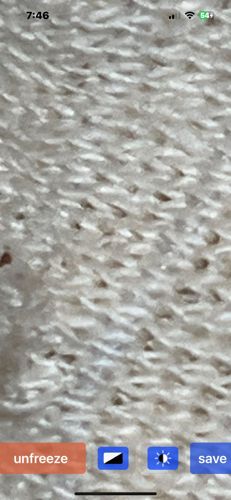Carpet beetle larvae (likely varied carpet beetle)
Scientific Name: Anthrenus verbasci (most common species associated with household damage)
Order & Family: Coleoptera, Dermestidae
Size: Larvae: 2-5 mm; Adults: 2-3 mm

Natural Habitat
Indoors, especially in areas with keratin-rich materials such as carpets, woolens, furs, natural fiber textiles, stored food products, and insect collections. They prefer dark, undisturbed areas.
Diet & Feeding
The larvae feed on a wide variety of animal and plant products, including wool, fur, feathers, silk, leather, pet food, dried meats, museum specimens, and pantry items. They do not feed on synthetic fibers.
Behavior Patterns
Carpet beetle larvae are slow-moving and often play dead when disturbed. They are typically found in dark, hidden areas. Adults are active flyers and are often attracted to light, or feed on pollen and nectar outdoors. The life cycle involves egg, larva, pupa, and adult stages, with larvae being the damaging stage.
Risks & Benefits
Risks: Major household pests, causing damage to natural fiber textiles, carpets, clothing, and stored food products. Can aggravate allergies in some sensitive individuals through their shed skins or bristles. Benefits: In nature, they are detritivores, helping to break down decaying organic matter. However, in human dwellings, their presence is almost entirely detrimental.
Identified on: 9/18/2025